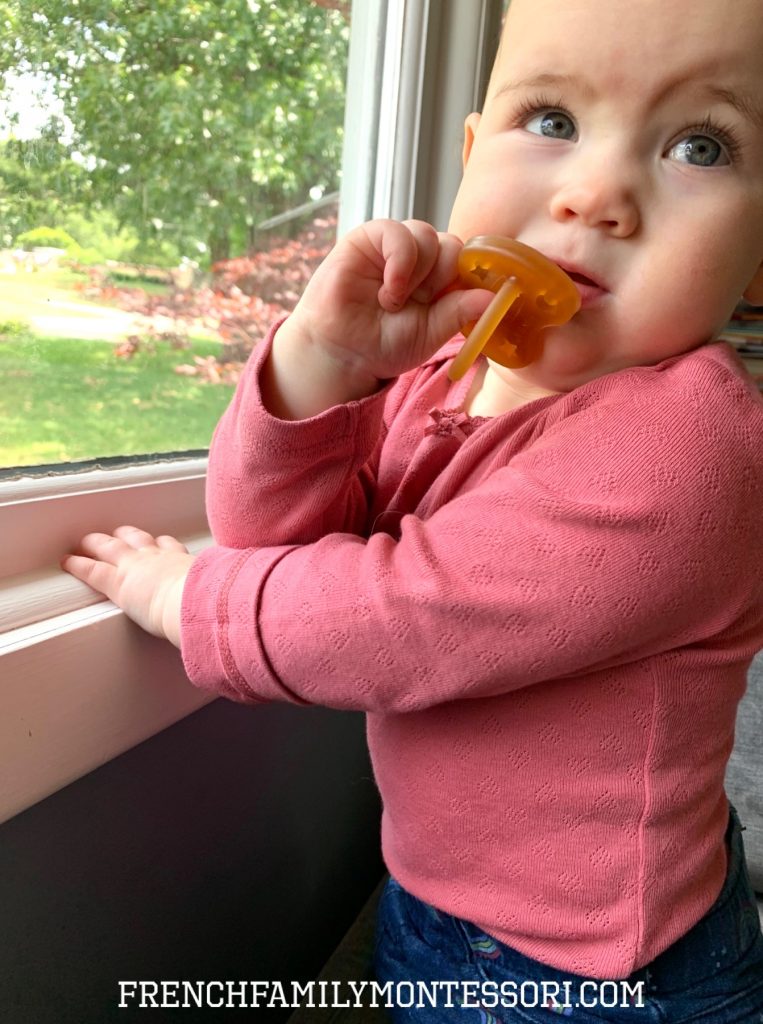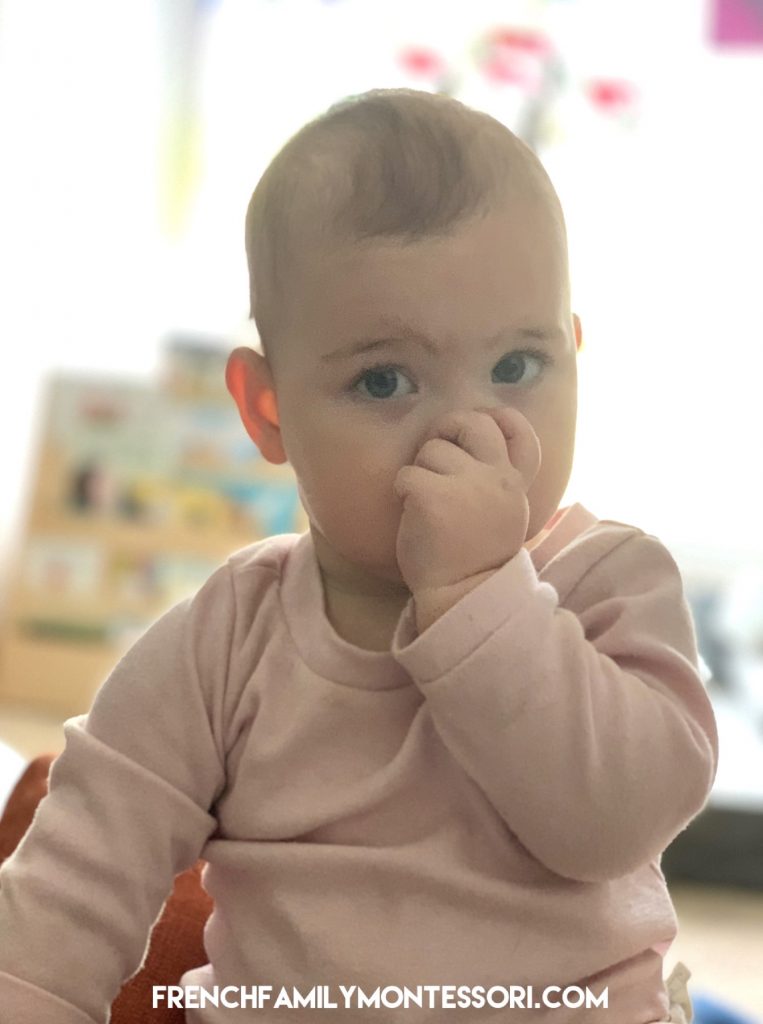
From a general perspective, there are many pros and cons to using a pacifier for your little one. However, from a Montessori viewpoint, they are not recommended. Before I continue, I would like to say that pacifiers, like many parenting choices, is a personal decision. I’m going to share why they aren’t encouraged and what we do, but, as with everything, you need to decide and do what is best for you and your family.
-When offering a pacifier, we are taking away the child’s ability to learn to soothe themselves. Learning to self-soothe is one of the first dilemmas a child faces. Mastering this predicament helps prepare them for the lifelong ability to solve their own problems. This makes for an independent and happier child who is confident in their decisions.
-A pacifier is most often used to help soothe a child, or “pacify” them. This can sometimes replace the comfort and affection that the child seeks from their parent or another caregiver.
-A pacifier is also used to quiet a child. Have you seen the pacifiers that have “mute button” or “pull to sound alarm” written on them? During a time when crying is how the child expresses their needs, it’s difficult to justify preventing them from communicating the only way they know how. Can you imagine someone preventing you from conveying your needs and then asking what’s wrong? It’s like we are telling the child that we don’t want to listen to what they have to say or want them to express their needs.

I’m not going to pretend we didn’t attempt to give the girls a pacifier. They were first introduced to one in the NICU and then by us when we thought it would bring comfort to our little colicky babies. But thankfully, they never took to it–or the 20 others we provided (although they do use one as a teether).
I was so thankful when the girls learned to suck their thumbs. When I expressed my joy at their new discovery, the reactions from some were a little heartbreaking. I was told that a pacifier was better because we “could just take it away, you can’t take away your child’s thumb.” And that it was easier to cut the nipple off the pacifier when we didn’t want them using it anymore. Why would I want to just take away something that comforts my child; where’s the respect in that?
While thumbsucking is such a blessing right now, there are a few things we do to help prevent it from becoming a curse later on.
-We recognize the reasons behind it and react accordingly. E will suck out of boredom, discomfort, or tiredness. V, when tired. So when I notice that E’s just sitting in the middle of the room sucking her thumb, I check the time and go through the checklist. Is it nap time? Is she in distress or uncomfortable? Is she in an unfamiliar environment with strange people? Does she need a cuddle and read? Does the material need rotating or does she need help starting something?
-If E is sucking and it’s not due to being tired or discomfort, we try to encourage the use of her hands. I may use this opportunity to introduce a new material. We may sing patty cake or the Itsy Bitsy Spider (Incy Wincy Spider), as both are songs with choreography for the hands. We will practice sign language. If sucking when reading, I offer her a teether. When her hands are busy, she’s less likely to suck her thumb out of pure ‘boredom’.
-If she is tired, I point that out: “E, I see you must be tired because you are sucking your thumb. Let’s get you ready for bed.” This is me verbally acknowledging a connection between the thumb sucking and bedtime so that, in time, she too will recognize it. As she gets a little older, the hope is that she will become more aware of her thumb sucking and, perhaps, limit it on her own, in due time.
-Trust the child. Ultimately, most children stop sucking their thumbs, on their own, before age 5. So we’re respecting that the girls will stop on their own, in due time. Admittedly, there are times that professional help may be required. This would definitely be a last resort, for us, as some of the recommendations are not necessarily Montessori-friendly. But we have some time until this becomes a concern.

Ultimately, you need to do what is best for your child and family. There are multiple medical reasons that make pacifiers a necessity and no one should ever make you feel like you need to explain your choices or feel guilty.
Is your little one a thumb sucker or use a pacifier?
.
.
.
.
